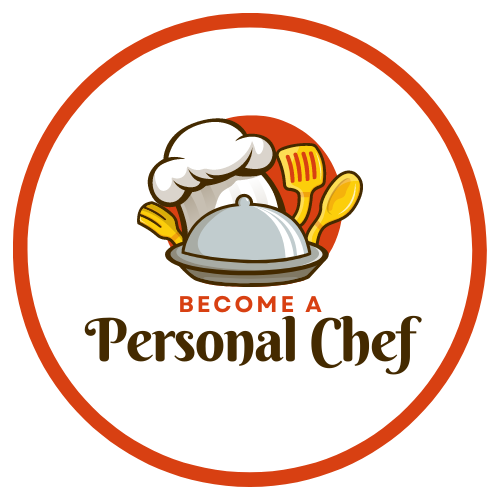Table of Contents
ToggleHawaiian Food for Personal Chefs
Today, we’re embarking on a culinary journey to the tropical paradise of Hawaii. Hawaiian cuisine is an exciting blend of diverse cultural influences and local ingredients, resulting in a unique flavor profile that captivates food lovers around the world.
Aspiring personal chefs need to offer something different than traditional chefs who specialize in one or two kinds of cuisines. I’ve written an extensive article with links to many cuisines for your consideration – World Cuisine for Personal Chefs
Key Ingredients in Hawaiian Cuisine
Hawaiian cuisine prominently features ingredients like coconut, pineapple, taro, sweet potato, breadfruit, rice, seaweed, fish, and seafood. Other notable ingredients include Maui onions, roasted candlenut, soy sauce, sesame oil, guava, macadamia nuts, and ‘Alaea sea salt.
Sourcing Ingredients and Substitutes
While sourcing some of these ingredients may require a visit to a specialty store or an online order, many can be found in local supermarkets. When necessary, substitutes can be used. For example, regular sea salt can replace ‘Alaea sea salt, and common nuts like almonds or pecans can stand in for macadamia nuts.
Traditional Cooking Methods
Traditional Hawaiian cooking methods include roasting (as in the famous luau pig), steaming, and stir-frying. The iconic Hawaiian poke bowl showcases raw, fresh seafood, while the loco moco features a hamburger patty served over rice and topped with a fried egg and gravy.
Tasting Hawaiian Cuisine
Hawaiian cuisine offers a variety of flavors, from the sweet and tangy taste of pineapple to the rich, nutty flavor of macadamia nuts and the savory umami of soy sauce. It’s not typically spicy, but the spice level can be adjusted to suit your client’s preference.
Cultural Significance and History
Hawaiian cuisine reflects the islands’ diverse cultural history, incorporating elements from native Hawaiian, Asian, and American culinary traditions.
Dietary Considerations
Hawaiian cuisine can be both healthy and indulgent. Many dishes feature lean proteins, fruits, and vegetables, but there are also rich, hearty options like loco moco6. Be aware of potential allergens, especially seafood, for clients with dietary restrictions.
Traditional Accompaniments
Common Hawaiian side dishes include macaroni salad and steamed rice. Desserts often feature local fruits, like the popular haupia (coconut pudding) and pineapple upside-down cake.
Presentation and Serving
Hawaiian dishes are typically served in a casual, family-style manner, reflecting the islands’ spirit of ‘ohana, or family. For a traditional luau, food is often served buffet-style, allowing guests to sample a variety of dishes.
Variations of Hawaiian Cuisine
There are many regional variations within Hawaiian cuisine, reflecting the unique characteristics of different areas and cultural influences. For example, you might find Japanese-inspired musubi or Portuguese-influenced malasadas.
Equipment and Preparation
While no specific equipment is required for most Hawaiian dishes, a good grill can be handy for preparing meats and seafood. Some recipes may require advance preparation, like marinating meats or soaking beans.
Hawaiian Food for Personal Chefs
Here’s a list of some essential tools, utensils, pots and pans often used when preparing Hawaiian (U.S.) foods:
Chef’s Knife: A versatile tool used for chopping, slicing, and dicing ingredients.
Cutting Board: A sturdy surface where ingredients are cut. It helps protect countertops and makes clean-up easier.
Wok or Large Skillet: Often used for stir-frying vegetables, meats, and making fried rice.
Dutch Oven or Large Pot: Essential for making soups, stews, and one-pot meals like laulau or kalua pig.
Rice Cooker: Rice is a staple in Hawaiian cuisine, and a rice cooker ensures perfectly cooked rice every time.
Baking Sheet: For roasting vegetables or baking items like sweet bread.
Mixing Bowls: Essential for combining ingredients. Used in almost every recipe.
Wooden Spoon: A must-have for stirring. It’s gentle on your pots and pans and doesn’t conduct heat.
Measuring Cups and Spoons: Necessary for accurate measurements of ingredients.
Tongs: Especially useful when handling hot foods or turning meat while it cooks.
Peeler: Used for peeling fruits and vegetables.
Whisk: Useful for mixing, beating, and whipping ingredients.
Grater: Used for grating fresh coconut or zesting citrus fruits.
Grill or Grill Pan: Hawaiian cuisine often involves grilling, especially for meats and seafood.
Slow Cooker or Instant Pot: Many Hawaiian dishes, like kalua pig, are often slow-cooked to bring out flavors.
Pineapple Corer/Slicer: A handy tool for preparing fresh pineapple, a common ingredient in Hawaiian cuisine.
Fish Spatula: This thin, slotted tool is perfect for handling delicate fish, a staple in Hawaiian cuisine.
Remember, the tools you’ll need can vary depending on the specific Hawaiian dishes you plan to prepare.
Wondering what tools a personal chef might need? I’ve written an extensive article for you – A Comprehensive List Of Must-Have Tools and Essential Items for the Personal Chef
Personalizing Hawaiian Cuisine
As a personal chef, you can personalize Hawaiian dishes to suit your clients’ preferences. This could mean adjusting the seasoning, offering vegetarian versions, or incorporating favorite ingredients while still maintaining the dish’s authenticity.
Ever wondered about the key to a successful personal chef business? Your answers await! Click here and join us as we delve into the essential steps and sophisticated strategies you need to master for a flourishing career as a personal chef. Don’t just dream it, achieve it!
Hawaiian Food for Personal Chefs
As we wrap up our exploration of Hawaiian cuisine, it’s evident that the islands offer a vibrant and diverse culinary landscape for personal chefs to explore. The fusion of various cultural influences coupled with the bounty of local ingredients creates an unparalleled flavor profile that is both exotic and familiar.
Whether you’re preparing a traditional poke bowl, experimenting with a modern interpretation of Kalua Pig, or creating a tropical dessert using fresh fruits like pineapple and coconut, there are endless possibilities to infuse your dishes with the spirit of Aloha.
So, personal chefs, let the rich flavors and unique food traditions of Hawaii inspire your culinary creations. Here’s to harnessing the essence of this tropical paradise in every dish you prepare.
Aloha and bon appétit!
